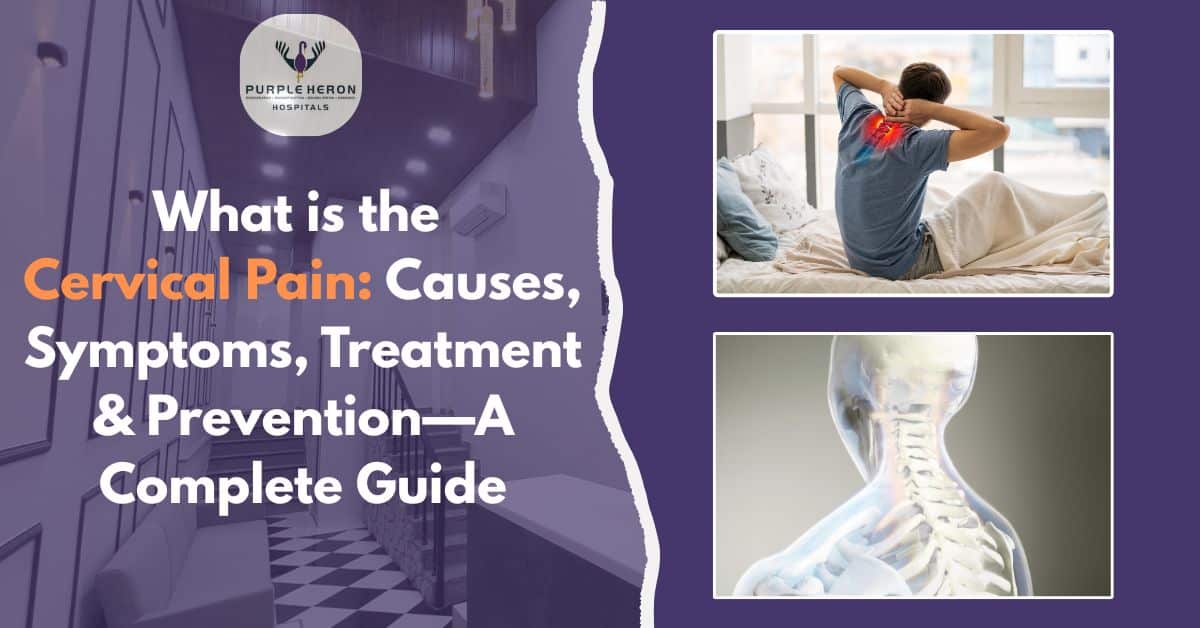Cervical Pain: Causes, Symptoms and Treatment
In today’s time, cervical pain is becoming a common problem. This problem is increasing rapidly not only in the elderly but also among the youth and office people. The use of a mobile, laptop, or computer for a long time, wrong posture, and stress directly lead to this problem.
The main cause of neck pain
Wrong sitting method: Working on a computer or laptop for a long time in the office or home, or bending the neck to see the mobile, puts pressure on the neck muscles and bones.
Problems of Cervical Spine: Sometimes bones or discs can cause natural damage, causing pain.
Excessive stress and mental pressure: Stress and anxiety increase muscle tension, which can cause neck pain.
Irregular lifestyle: The wrong way of sleeping, lifting heavy weight, or not doing physical exercise also increases this problem.
Today’s habits and their effects
In today’s digital age, people often spend more time on mobile phones and laptops. “Text Neck” or Mobile Pressing the neck and bending the neck muscles and discs puts more pressure on the disc. In addition, sitting in the office for a long time and working without breaks also increases neck pain.
Symptoms of neck pain
Persistent or intermittent neck pain
Stiffness in the shoulders and upper back
Occasional headaches or dizziness
Numbness or tingling in the hands and fingers
Difficulty moving the neck or a “cracking” sound
When should you consult a doctor
If the pain persists for a long time, there is weakness in the hands or feet, or sleep is being affected, then the specialist doctor should contact the doctor immediately.
Treatment and relief options
Nowadays there are many nonsurgical and minimally invasive remedies available for neck pain.
Minimally Invasive Treatment: This technique reduces pain by minimal interference on the neck muscles and discs.
Physical Therapy and Rehabilitation: The muscles are strengthened through the right exercise and stretching and reduced pain.
Pain-relieving drugs and specialized therapy: Sometimes doctors use pain-reducing drugs and muscle-relaxing techniques.
Lifestyle changes: Right posture, regular breaks, light exercise, and stress-reducing measures are also necessary.
Dr. Ayushi Chaudhary’s special approach
Dr. Ayushi Chaudhary of Purple Heron Hospital specializes in spine and musculoskeletal care. They believe that neck pain is not only pain, but it also affects the quality of life.
Minimum Intervention: Dr. Ayushi adopts the least intervention technology, which makes the body naturally healthy.
Comparing Rehabilitation: Not only is the purpose of reducing pain important, but strengthening muscles, improving movement, and giving prolonged relief are also their priorities.
Personal Plan: Every patient has a different problem. Therefore, Dr. Ayushi makes a personal treatment plan for every patient.
Remedy
Maintain the right posture: Keep the back straight and shoulders relaxed while sitting.
Take a break: Take a 2-3 minute break every 30-40 minutes while working for a long time.
Light stretching and exercise: Stretching the neck and shoulder muscles reduces pain.
Hot water cuisine: It helps to relax the neck muscles.
Use of supportive pillows: Use pillow supporting neck during sleep.
Modern technology and surgery options
If non-surgical treatment does not get relief, minimally invasive surgery is a safe option.
Inflammation in the disc or muscles is reduced to reduce pain.
Pain is relieved without damaging muscles and bones.
Recovery time is very short and the patient can return to normal life quickly.
Conclusion
Neck pain is a common problem nowadays, but it can be controlled by correct diagnosis and expert care.
Under the supervision of Dr. Ayushi Chaudhary, patients not only get relief from pain, but also improve the quality of life.
Do not ignore your neck problems today. Perfect treatment, expert advice and lifestyle change can lead you to a healthy neck and pain-free life.



